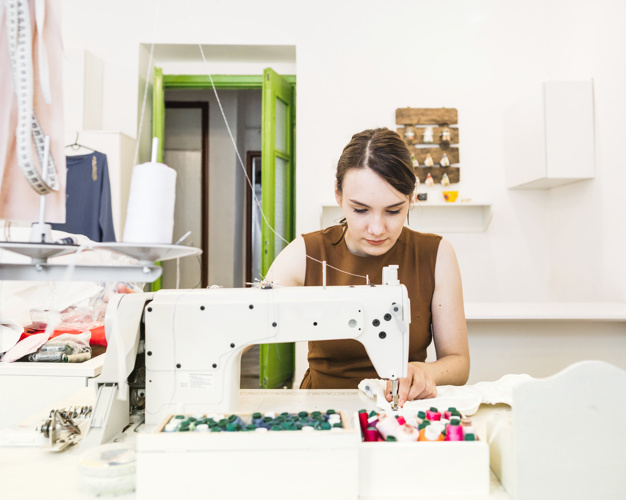

If you have been guilty of daydreaming about starting your own fashion label, you are not alone! Many budding designers aspire to do this but are filled with countless questions regarding how to go about it. In an industry that is continuously evolving, as a designer, you are expected to innovate and understand the needs of the market seasonally. Because the public always wants something new, designers have to put their best foot forward to incorporate fresh inspiration into their collections.
So let’s take a look at the stepwise process of how an idea becomes a finished product in fashion designing.
Directives are a set of guidelines or a brief that helps you get an idea of what is expected from the product. It can be given by your fashion designing course teacher, by a company or a client. You can also set yourself a brief! But a brief must always be specific and consider many things like the occasion and season, which impacts the fabric you will choose. You can mention your muse, the customer, your target market, the fabric and material, the costing and ultimately, the practical outcomes.
All good designs start with research as it is the only way to make sure your ideas are original and do not imitate past designs. It also helps you discover new things from where you can get inspiration and form a coherent idea of your design. You can follow a simple formula on the two types of research for your designing process. First is gathering the materials like fabrics and fastenings, which are the tangible elements of your collection. The second is finding a concept and visual inspiration for your work to set your design apart from others.
Your research should be broad and in-depth and must include many categories, such as deciding the structure and shape of your product. This will give you a practical approach as to how your item would be constructed, whether it is a shoe, garment or accessory. Other things to consider are the colour, texture and prints on the fabric. The remaining details can come from the inspiration sources in your research, like historical and cultural references and contemporary trends. When you have enough concepts and ideas for your project, start brainstorming and putting them on paper by creating a mind map and making sense of them using imagery.
Your theme needs to go along with the demands of your brief. Try to pack your design with your actual interests and let your personality shine. This will transform the nerve-racking process of designing into a fun one! You can tell a story through your collection. You could also base it purely on visual sources which come together in a common thread. Another way to go is abstract, where you choose an unrelated description or word and translate it into a series of ideas. You should include both primary and secondary sources of research when you make up a theme. Primary sources include personal findings and experiences, whereas secondary sources consist of information received by other people and sources, like books or the internet.
The internet is one of the best options to get access to information and seller contacts worldwide. You can also get to know about the market trends and latest technologies from here. You can identify dozens of sources for research only if you stop and notice them. The film, theatre and music are popular starting points. You can also gain many perspectives by looking at other countries and cultures, catwalk trends, and sifting through magazines. Visiting art museums and galleries and vintage shops, and flea markets are sure to fuel your research with a plethora of vibrant ideas and inspirations.
Compile your work in a sketchbook and use it as a notebook to keep track of your observations for the upcoming collection. You will undoubtedly practice your drawing skills in your sketchbook. Concentrate on all or part of the objects you’re drawing to understand better how they’re shaped and made. You can make a collage to compile your research, giving you further ideas for design and texture. Or you could use juxtaposition, which is a method to put together two different things that share at least some similarities. The more you deconstruct your research, the more variety of ideas you will get! Cross-referencing and creating a mood board are also popular ways for compilation.
Your analysis can take shape in the form of drawing shapes from your sources and experimenting with details for construction and linear drawings. Consider new ideas for pattern, texture and embellishments in your drawings.
The most exciting step of the process is actually designing and coming up with a final sketch from your scattered ideas. There are several solid techniques to jump from research to design. The first is the model and drape method, where you try out new shapes and structures by draping fabric onto a mannequin. If you are a new designer, you should try out the second method of collaged research on a drawn figure. In this, you paste the photocopies of your researched material onto a front view drawing of fashion figures. You can get a clear idea of silhouettes and shapes on the body with this method. The third is making a photomontage with drapery, which is essentially a combination of the first two methods. The images used for the collage are from draping experiments on the mannequin. Several design elements like colour, fabric, silhouette, print and embellishment, historical references, and market trends to look out for before chalking out the final design.
You have been very patient on this journey of understanding the designing process and should be rewarded with the fulfilment of your designing dream! Go through our website for excellent courses like Bsc Fashion Designing to get a head start on your fashion designing career.